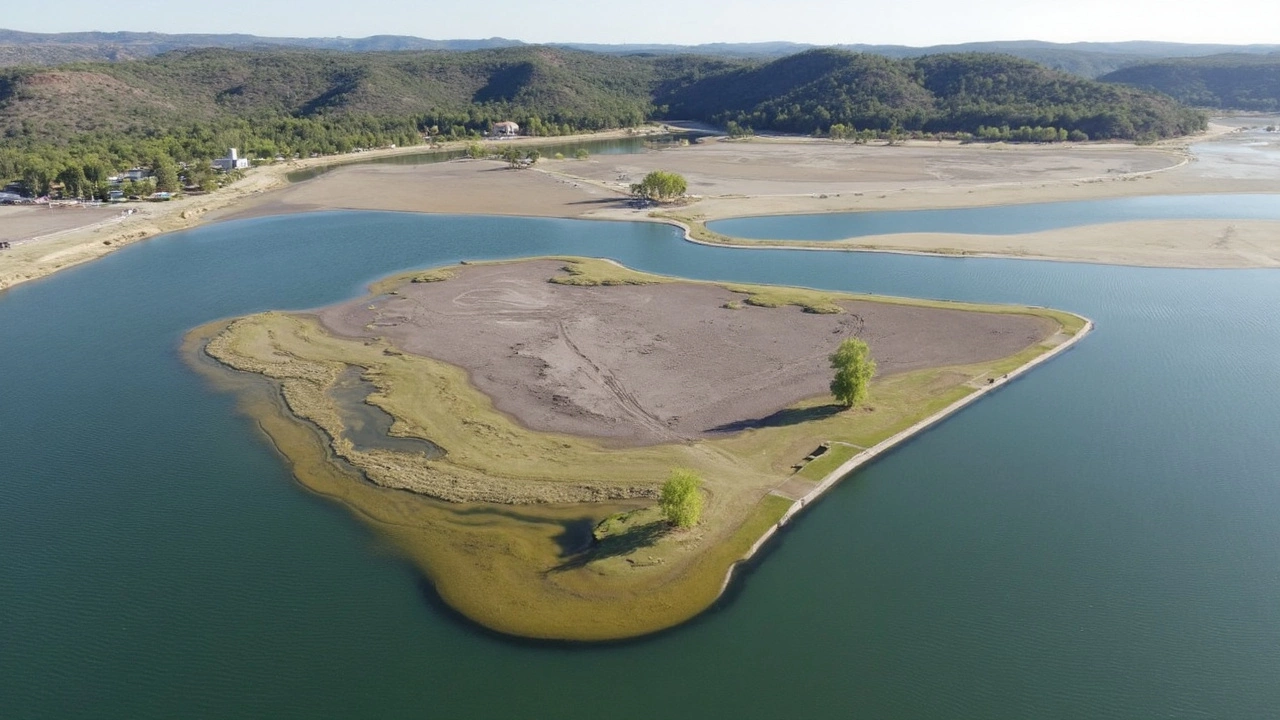Canyon Lake Drought Leaves Texas Reservoir at Lowest Point in Decades
Canyon Lake, long considered one of Texas’ reliable getaways for boating, fishing, and swimming, is almost unrecognizable these days. You’d be hard-pressed to find a local who remembers the last time the water sat this low. As of late May 2025, the lake’s elevation dipped to just 878.19 feet, and current data puts it at a lean 45.4% of full capacity—its lowest point since Lyndon B. Johnson was president. For plenty of folks, seeing the empty boat ramps and dry, cracked shoreline drives home the reality far more than the numbers ever could.
The Canyon Lake crisis is a direct hit from Texas’ stubborn multi-year drought. The Guadalupe-Blanco River Authority, which manages the reservoir, traces this historic drop-back to at least five years of limited rainfall in the watershed. It’s not just runoff that’s missing—the high summer heat accelerates evaporation, and a parched ground means more water soaks away before it ever reaches the lake. Local residents who’ve grown up seeing the lake thrive now watch as vital boat launches close and the waterline recedes day by day.
It’s not just recreational lovers feeling the strain. Cities like San Marcos, which tap Canyon Lake for nearly nine million gallons of water a day, are monitoring the drop closely. So far, homes and businesses still have a steady supply, but no one’s pretending the system isn’t under serious pressure. City utilities and the GBRA keep a tight watch on reservoirs, pumping stations, and emergency plans. There hasn’t been a hike in water rates yet, but warnings loom: if the drought keeps beating down, price bumps and stricter rationing could follow.
Rippling Impacts Across Region, Businesses, and Aquifers
The lake’s reputation as a playground for Texans from San Antonio, Austin, and beyond has taken a major hit. At this water level, most of the popular boat ramps are closed and public swimming spots are either muddy or high above the shrunken shoreline. Marinas are watching summer bookings evaporate, and lakeside restaurants and shops are feeling the economic squeeze. Some have pivoted to land-based activities, but nothing can replace a bustling summer on the water.
Things aren’t just tough at surface level. The drought is straining major underground water sources, too. Both the Edwards and Trinity aquifers—lifelines for millions in Central Texas—are sliding toward record lows. This double whammy means everyone from city managers to local farmers is urged to save every drop, and communities like Kyle and Buda have kicked in Stage 3 drought restrictions. That means no more watering lawns, washing driveways, or filling backyard pools, and hefty fines await those who break the rules.
Local experts like Adeline Fox of the GBRA and Paul Kite from San Marcos utilities say teamwork has kept the taps running so far. They’re constantly tweaking water flows, storage protocols, and conservation campaigns to balance needs for neighborhoods, agriculture, and recreation alike.
Despite the gloom, those who’ve lived through previous Texas droughts remind us that the lake has a stubborn history of bouncing back. But the outlook hinges on weather shifts and serious conservation efforts. For now, everyone—from city leaders to weekend fishers—is learning firsthand what it really means when the water finally runs dry.
